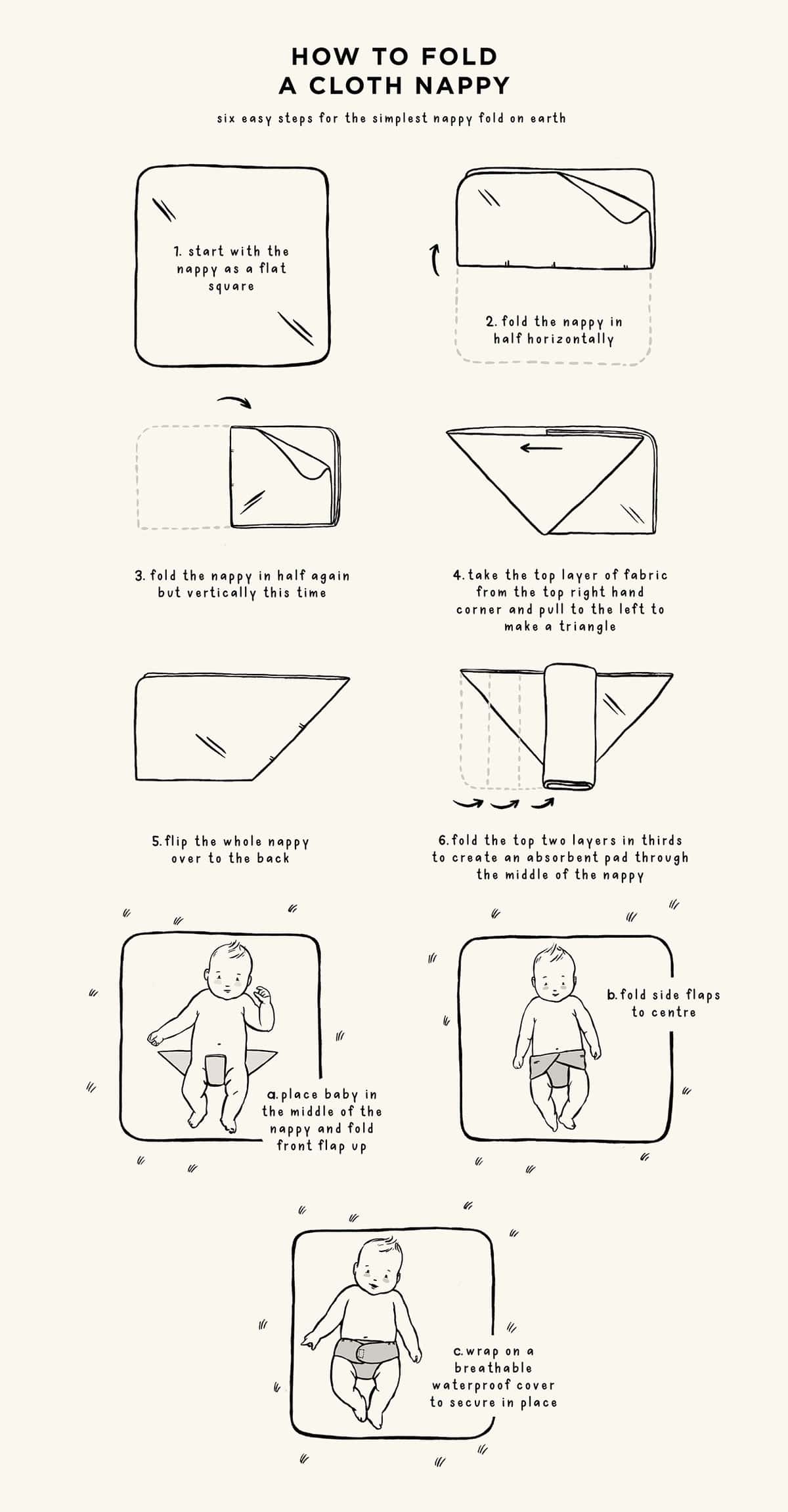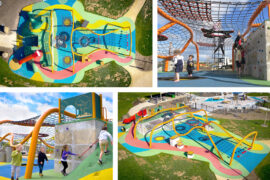Embrace the Art of Cloth Nappy Folding: A Step-by-Step Guide for New Parents
Hey there, super moms and dads! Ready to hop on the eco-friendly wagon and keep your little one comfy and dry? You’re about to become a cloth nappy-folding wizard, and we’re here to guide you through every tuck and fold. Embracing the magic of cloth diapers is not only good for Mother Earth but your wallet too — and it’s easier than you might think!
Why Cloth Nappies? A Bundle of Benefits!
Before we delve into the folds, let’s sprinkle a little bit of why cloth nappies are a fantastic choice:
- Eco-Friendly: Reducing landfill waste is just a fold away! Cloth nappies are reusable, washable, and adorable.
- Budget-Friendly: Save those pennies for future college funds or family vacations. Over time, cloth nappies are much more economical than disposables.
- Gentle on Baby: Soft, chemical-free fabrics mean fewer rashes and happy baby bums.
- Customizable Absorbency: Mastering folds means you can add extra absorbency exactly where your little tyke needs it. Long nap? No problem!
Getting Started with Cloth Nappies
First things first, let’s assemble our nappy-folding toolkit. You’ll want to gather a few essentials:
- Flat or prefold cloth nappies (organic cotton, bamboo, or hemp are fab choices)
- A stash of snazzy, waterproof nappy covers to jazz up your baby’s bottom
- Nappy liners (optional, but they make clean-up a breeze)
- A touch of patience and your ever-present parental love
Don’t worry, you’ll get the hang of it in no time!
Choosing Your Cloth Nappy Type
There’s a whole world of nappy types out there! Flats are large square cloths you can fold in creative ways, while prefolds are rectangular with a thicker middle section. Both are fabulously versatile and budget-friendly.
The Basic Cloth Nappy Fold Arsenal
Now for the main event: the folds! We’re going to walk you through some popular and foolproof folds that will keep your nugget’s bottom dry and daydreamy.
The Classic Pad Fold
This is the simplest fold, perfect for beginners. It works wonders with a nappy cover.
- Lay your flat nappy out in a square and fold it into thirds, like a business letter.
- Place it inside the nappy cover, and voilà! You’ve got a quick, absorbent layer that’s ready for action.
The Angel Wing Fold
Wings aren’t just for angels; they’re for keeping everything nice and snug.
- Start with your flat nappy spread out, then fold it into a rectangular shape to fit your baby’s size.
- Place your little cherub in the center, with the bottom edge at their waist.
- Bring up the lower part between the legs, then wrap the “wings” (the corners of the top edge) around and fasten with a clip or cover. Snugness achieved!
The Jelly Roll Fold
Get ready to roll with this fantastic fold for containing those infamous newborn messes.
- Spread your flat nappy out and place your baby on top, with the bottom edge up to the navel.
- Gently roll the sides in towards the middle, creating a little nappy “jelly roll.”
- Lift the front part between the legs, wrap the rolled sides around the waist, and secure for the cutest little nappy roll you’ve ever seen.
The Newspaper Fold
Extra! Extra! Read all about this fabulous fold for extra absorbency up front.
- Place the flat nappy down and fold one corner over to create an offset triangle shape.
- Lay your little headline-maker face-up on the larger part of the triangle, with the narrow tip pointing up.
- Bring the tip up between the legs, fan out the sides, and wrap them around to secure this front-page-worthy nappy fold.
The Origami Fold
Last but certainly not least, the Origami fold! It’s like paper-folding but with a lot more giggles.
- Spread the nappy flat and then fold it in half to form a triangle.
- Grab the lower corner of the triangle and fold it up to the top, creating a smaller square.
- Flip the entire thing over, put your baby on top, and proceed with the envelope-style folds you’re now a pro at!
This fold is fabulous for adjusting the absorbency exactly where your little one needs it.
Well done, diaper dynamos! You’re on your way to becoming cloth nappy pros. Remember, practice makes perfect. Now let’s keep the fold fiesta going, shall we? Stay tuned for more pro tips on caring for your cloth nappies, tackling nighttime leaks, and making the most of your new eco-friendly lifestyle. After all, the fluffier the nappy, the cuter the tushie!
Ready for some nappy-changing fun? Let’s jump into the joyful journey of cloth diapers together, and make a difference—one bottom at a time. Keep scrolling for more cloth nappy genius insights!

5 Essentials to Prepare for Cloth Nappy Folding Success
Before your hands get busy with folding, let’s prep like pros! Here are five things all parents should know when preparing for cloth nappy folds:
1. Understanding the Importance of Prepping New Cloth Nappies
New cloth nappies often come with natural oils that can inhibit absorbency. To get them ready for their first use:
- Wash them multiple times in hot water (check manufacturer’s instructions for the optimum number of washes).
- Avoid fabric softeners and added fragrances that can decrease absorbency and irritate your baby’s skin.
2. Select the Right Size and Material for Your Baby
Size and material matter!Check:
- If the nappy fits snugly around the waist and thighs to prevent leaks.
- The type of material – organic cotton, bamboo, and hemp have different absorbency levels and drying times.
- The thickness of the cloth which affects how it holds up to your baby’s output.
3. Stocking Up on the Right Accessories
Accessories can simplify cloth nappy folding, so have these on hand:
- Nappy fasteners (such as Snappi or Boingo brands) to secure folds without pins.
- Extra inserts or doublers for added absorbency during naps and nighttime.
- Wet bags for storing used nappies when you’re out and about.
- A nappy sprayer attached to the toilet for easy pre-wash rinsing.
4. Practice Folding Techniques Before the Big Day
Just like any skill, practice leads to perfection. Here’s how to make the most of your practice time:
- Watch tutorials or attend a cloth nappy workshop.
- Practice folding with a doll or stuffed animal to mimic your baby’s size.
- Try different folds to find the one that’s best for your baby’s needs.
- Get your partner involved! Sharing the cloth nappy duties can make life easier.
5. Creating a Cloth Nappy Changing Station
Organization is key to a smooth nappy-changing experience. Make sure your station has:
- Enough space for nappies, covers, and accessories.
- Accessible storage bins or baskets.
- A comfortable changing pad for your tiny tot.
- A stack of pre-folded nappies for quick changes, especially handy in the middle of the night.
Now that you’re prepped and primed, you’re all set to embark on this wonderful and fulfilling journey of cloth nappy folding. Remember, each fold you master is a step towards sustainable parenting, and with these tips, you’ll be folding like a pro in no time!
Let’s get folding and turn those diapers into cozy, leak-proof hugs for your baby’s bottom. Your little one will thank you with happy, wiggly dances and the best kind of silence — the sound of sound sleep. Happy folding, fabulous parents!
See more great Things to Do with Kids in New Zealand here. For more information see here
Disclaimer
The articles available via our website provide general information only and we strongly urge readers to exercise caution and conduct their own thorough research and fact-checking. The information presented should not be taken as absolute truth, and, to the maximum extent permitted by law, we will not be held liable for any inaccuracies or errors in the content. It is essential for individuals to independently verify and validate the information before making any decisions or taking any actions based on the articles.




